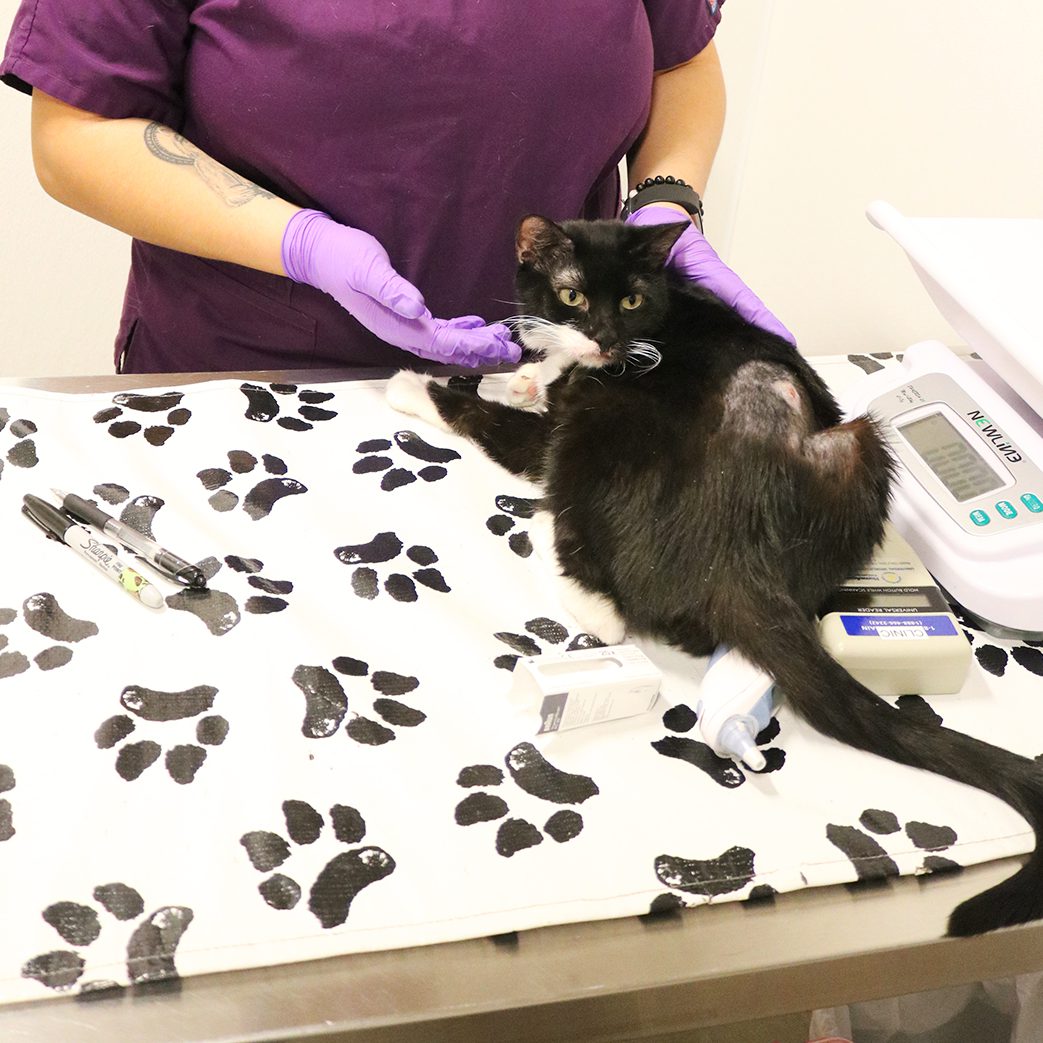For the Love of Cats
Monday, April 12th, 2021
IN JANUARY, the Humane Society of Southern Arizona’s Trap-Neuter-Return (TNR) program hosted its first M.A.S.H. (Multiple Animal Surgical Hospital) clinic. Cats from communities across Southern Arizona and tribal lands received spay or neuter surgeries during the clinic. The Trap-Neuter-Return program serves community cat colonies by providing these surgeries to help stem the tide of homeless pet populations. Under the direction of Clara Lee Arnold, the Community Cat Coordinator, HSSA’s TNR program is now able to provide these services to neighboring shelters and animal rescue groups.
When asked what prompted the ambitious goal of holding this M.A.S.H. clinic, Clara Lee explains, “Cochise County Humane Society (CCHS) had discovered a large cat colony of fifty or more cats and had been requesting help. I reached out to transport these cats to HSSA’s Spay & Neuter Clinic in order to handle that number all at once. They said ‘yes’.” Soon after, two more organizations, the San Carlos Apache-run Geronimo Animal Rescue Group (GART), and Border Animal Rescue (BAR) signed-on as well.
It’s hard to catch Clara Lee standing still. During the hectic 4-hour surgery session she could be found carrying cats in pet carriers — one in each hand — to and from the surgical bays, changing out the laundry to ensure there were plenty of clean towels and blankets for all the cats, or quickly answering questions coming from several people at once.
The entire Spay & Neuter Clinic was abuzz during the event. Each participating shelter and organization were scheduled in waves to allow for the clinic to adequately provide for the number of cats attending the clinic. HSSA and volunteer veterinarians, led by HSSA Medical Director Dr. Kathryn Halstead, each worked at a surgical table accompanied by veterinary students while clinic staff prepped and moved each cat in and out of the surgical bays. Other staff, including Angeline Fahey, HSSA’s Community Cat Specialist, massaged and soothed cats post-surgery. At first glance the hum of activity from the nearly two-dozen people appeared chaotic. In reality, the whole affair was a well-oiled machine with each person involved expertly performing their roles.
“We provided spay and neuter surgeries to 73 cats. The surgery time was only four hours, but it took literally days of coordinating and many hours the weekend before to prepare the clinic, obtain supplies, schedule volunteers, and many more things,” Clara Lee explains regarding the incredible work involved, “The surgery gets all the glory, and they deserve it for what they accomplished, but there are always many, many hours of non-glory!”
Providing surgical sterilization services for large numbers of community cats in a single session is an essential approach to reducing the number of cats in colonies before they have the opportunity to reproduce. For the shelters that participated in the M.A.S.H. clinic, being able to provide the cats in their care with these crucial services relieves the financial and emotional burdens these organizations face.
This project is a perfect example of what we can achieve as a region if we work together, and HSSA is committed to collaborating with other rescues and shelters to compassionately serve pets and the people who love them.
Asked if the success of the M.A.S.H. clinic means there will be more opportunities to serve the cats in these communities, Clara Lee beams, “If we can get enough sponsorships and volunteers, we would ideally love to be able to do four or five of these a year."

